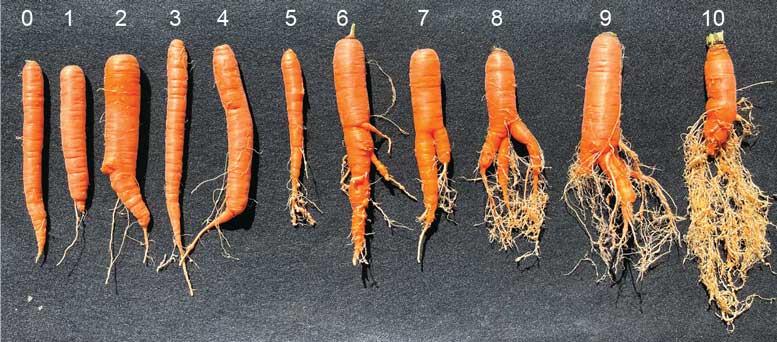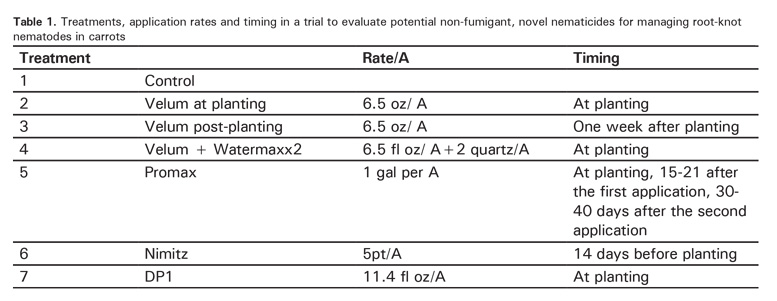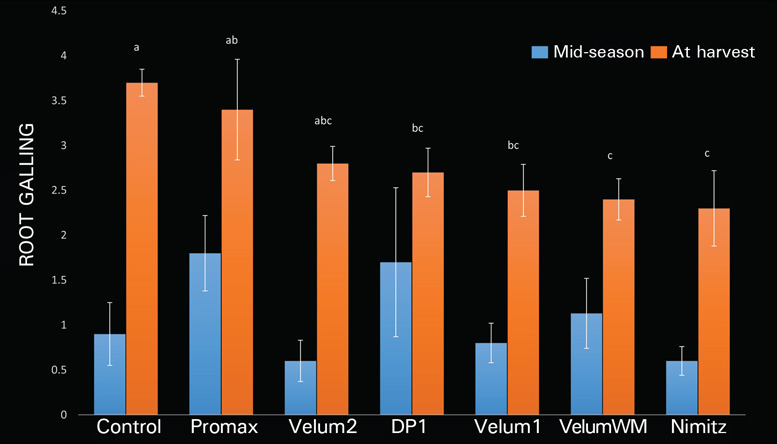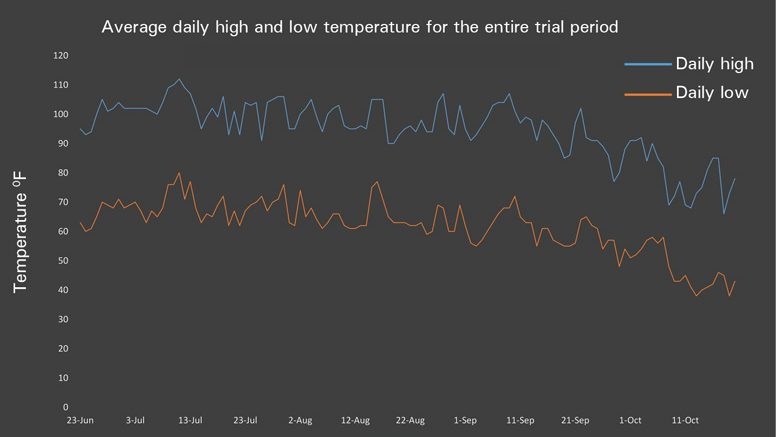|
Click to listen to this article
|
By Jaspreet Sidhu, Vegetable Crops Advisor, University of California Cooperative Extension
Recent research hints at the potential of some non-fumigant nematicides to control root-knot nematodes in carrots. This could benefit carrot production in growing regions including California.
As the leading producer of carrots in the United States, California produces about 80 percent of the total U.S. production. Carrots are grown year-round in diverse growing areas in California. The southern San Joaquin Valley has the most concentrated area under carrot production, with Kern County producing almost 60 percent of the state’s carrots. The nation’s two largest carrot growers and shippers are also located in Kern County. However, the pride of being the “carrot capital” of the nation also comes with several challenges for carrot cultivation; one such challenge is the damage caused by root-knot nematodes.

Challenges
Root-knot nematodes , Meloidogyne spp., are the most important plant-parasitic nematodes affecting carrot production in California, especially in light texture soils. The nematodes are widespread in Central and Southern California.
Damage results from feeding of second-stage juveniles inside carrot roots, and the roots respond to nematode invasion by the formation of root galls. The root-knot nematodes can cause substantial damage by stubbing, forking and galling of the roots, thereby reducing marketable yields. Deformed roots due to galls are unable to sustain the water and nutrient needs of the plants, leading to wilting and poor growth of plants. Forked roots also pick up excess soil that increases the tare transported to the processing facilities and increases processing costs for additional cleaning efforts.
Currently, there are no resistant cultivars available for the California carrot industry, and management has mainly relied on the use of pre-plant soil fumigants. Management with these products is expensive and involves safety and environmental risks.
New fumigant regulations by the Department of Pesticide Regulations (DPR) have been put in place to restrict the emissions of volatile organic compounds (VOC) from the use of soil fumigants. These regulations include limits on the amount of soil fumigants a grower is allowed to use in a year, caps on the amounts allowed within a township, and newly expanded buffer zones, meaning large parts of a field may not be treated at all. These new regulations by DPR may mean that there will be some fields not treated for nematodes because of limits placed on the amount of fumigants a grower is allowed to use or caps on the amount allowed in a township.
Rotation with non-host crops can be a viable option, but its utility is often limited due to the wide host range and reproduction potential of the root-knot nematodes.
Therefore, alternative control options that have high efficacy, are economically viable and are environmentally safe need to be evaluated under field situations. So far, there are no non-fumigant nematicides registered in California for use on carrots.

Trial
A nematicide screening trial was conducted in 2021 at the University of California Cooperative Extension (UCCE) Research Farm in Shafter, California. The objective of the trial was to evaluate potential non-fumigant, novel nematicides for managing root-knot nematodes in carrots.
The trial was conducted as a randomized block design with four replications and seven treatments. Rates, timings and methods of application for each treatment are listed in Table 1. Each plot was 20 feet in length with a 5-foot buffer between plots along the bed (30 inches wide). Carrot seeds cv. Maverick were seeded (three lines per bed) on June 23. Treatments were applied as soil drench using watering cans, and immediately following the treatments, plots were sprinkler irrigated to wash the products down. The trial was managed following grower standard agronomic practices. Average daily high and low temperatures for the entire trial period from June 23 to Oct. 20 are plotted (Fig. 1).
Carrot roots were evaluated for galling at mid-season and at harvest. About 100 carrots from each plot were randomly sampled and were visually rated for the severity of root galling on a scale of 0-10 (0=no galls, 10=completely galled roots), as shown in Fig. 2. The average galling on these roots was used to give a galling index for each plot. Data on root galling was analyzed using statistical analysis software.

*bars with different letters are significantly different
Results
The severity of root galling was assessed at mid-season (Sept. 2, 2021) and harvest (Oct. 20, 2021). At mid-season evaluations, the damage was quite mild, and root galling ranged between 0.5 in the Nimitz treatment and 1.75 in the organic treatment Promax and the developmental product DP1(Fig. 3). At harvest, there was a moderate increment in root galling across all treatments, and the treatments Nimitz, Velum+Watermaxx, Velum at planting and DP1 had significantly lower root galling compared to the untreated control. The treatments Promax and Velum post-plant were also numerically lower than the untreated control.
Conclusion
In our 2021 trial, there was some treatment effect on root galling throughout the season, with Nimitz, DP and the Velum treatments having lower root galling indexes compared to the untreated control and other products. The results indicated that Nimitz and Velum at planting had a long-lasting effect on root-knot nematode damage on the plants. The research trial demonstrates that the application of some of these products under experimental conditions in carrots provided acceptable control of root-knot nematodes compared to the untreated control.
Some of these products have the potential to be considered as an alternative, viable and safe option, but further evaluation and optimization are needed to better determine the efficacy of these products as sole treatments and in combination with other products and their continued use by the carrot industry.

